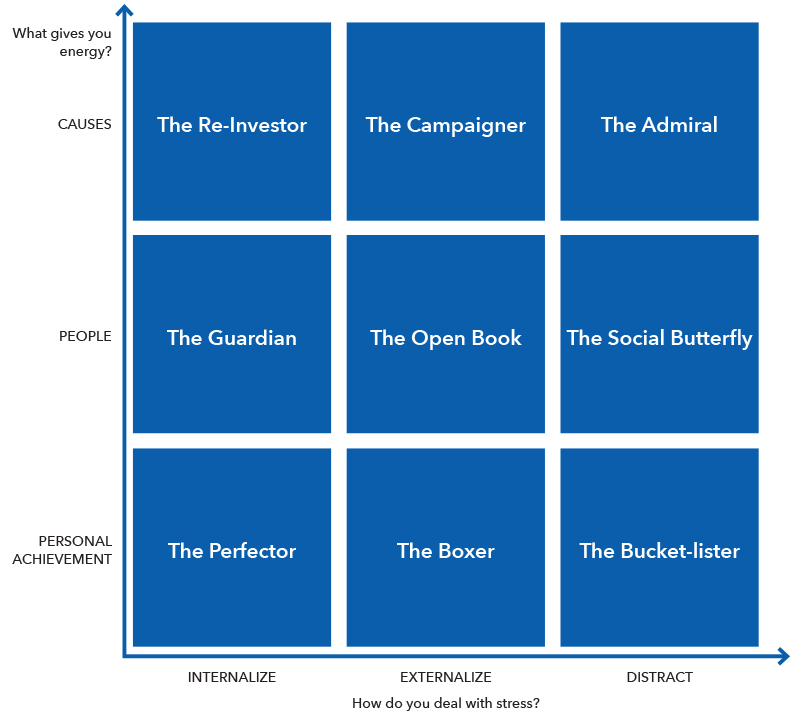Health care staff and executives know more than anyone the urgent need for resilience at children’s hospitals. Many initiatives—and a lot of money—have been aimed at this issue over the past several years, but most do not target solutions where they are most effective, says Leah Weiss, Ph.D., M.S.W., author, speaker and lecturer the Stanford University Graduate School of Business.
“Resilience is best cultivated at the team level,” Weiss says. “Among teams, the changes necessary to create lasting resilience are more effective than individual solutions and easier to implement than organization-wide solutions.”
This means knowing “what makes one another tick,” Weiss says. Research from Weiss and her colleagues at Skylyte, a digital company that works with teams to build resilience, discovered nine typologies centering on the two theories of motivation and coping. Knowing the typology each teammate identifies with gives insight into how to interact with them, whether as a manager or colleague, to minimize stressors and maximize motivators—ultimately leading to higher resilience and less burnout.
The two theories behind the typologies
The typologies developed by Skylyte are based on the theory of motivation and the theory of coping. Each typology aligns with one primary coping mechanism and one primary motivator, as shown the x-and-y graph below.

Motivational theory seeks to identity a person’s dominant driver. There are three primary motivators:
- Cause. Driven by a higher cause or sense of purpose.
- Personal achievement. Driven by goals and accomplishment.
- People. Driven by interactions with other people.
Coping theory seeks to identify the dominant way a person deals with stress, suffering and conflict. There are three main coping styles: internalizers, externalizers and distractors.
- Internalizers tend to take the issue that is bothering them and process it internally. At best, this means they can process situations through self-reflection and self-talk, often because they are highly self-aware. At worse, they take disproportionately more responsibility for outcomes and are less likely to seek help from others. This may cause self-blame and lack of self-compassion. They often worry about burdening others with their stress and may be unclear as to how others can help them process their feelings or experience.
- Externalizers tend to express their stress, concern and suffering in ways that are visible to others. At best, they can process emotions without letting them take over their internal balance by talking it through with others or by doing physical exercise. At worse, they displace conflict onto others, often taking their emotional toll out on something or someone who is completely disconnected.
- Distracters tend to escape their concern, suffering or stress by looking for other things to occupy their mind. At best, they can compartmentalize by creating specific moments to feel and think through their emotions and then move on to being proactive. At worse, they may find it hard to address their feelings head-on and to work through them. This may create an accumulation of feelings and thoughts that have no release, which may cause the stress to manifest itself in other ways.
The 9 typologies of teammates
Here are snapshots of the nine typologies. For more detailed descriptions, take the quiz from Skylyte. Although these typologies are reductionistic, Weiss says, they are meant to start conversations and create opportunities for interpersonal growth among teams.
The Re-Investor
Cause-motivated, stress-internalizer
Re-investors are driven by a higher purpose. They re-frame situations to favor their broader vision, but they may keep thoughts and emotions to themselves.
Teammate overview: Re-investors are idealists at heart and strongly believe in the work they are doing. Their drive for impact can sometimes lead to disappointment in the discrepancy between their values and that of their workplace. However, they may not always see the value in immediately voicing these frustrations, leading to pent up tension between them and their teammates.
Team takeaways: Re-investors require enough autonomy and decision power to pursue work they are passionate about. Because they process emotions by throwing themselves behind a cause, understanding how they directly contribute and knowing they have some level of power will keep them motivated and engaged. To mitigate buildup of negative emotion, it is important to balance this with structured support—for example, scheduling a standing meeting to give and receive feedback in a psychologically safe environment.
The Guardian
People-motivated, stress-internalizer
Guardians are motivated by close colleagues to be the best version of themselves, but they may close off and feel disconnected from their community.
Teammate overview: Guardians are ideal teammates—energized by being with and supporting others while also being extremely self-aware and empathetic. Guardians acutely understand and can address their own needs, but they may blame themselves when the team’s output is not well-received. This anxiety can stifle their creativity and lead to tension within the team when they are not able to operate at their full potential.
Team takeaways: To feel comfortable bringing their true self to work, Guardians need a psychologically safe environment and structured time to talk about emotions. For example, allotting time to debrief as a team after a meeting may be the difference between an internal spiral and a productive external team discussion.
The Perfector
Achievement-motivated, stress-internalizer
Perfectors’ energy comes from an inner desire to shape the world and make it their own, but they may blame themselves and keep their stresses and anxieties private.
Teammate overview: Perfectors have high expectations for themselves and often go by the mantra, "I just need to work harder." They always get things done, and done well, but tend to rely heavily on external validation when weighing success. Without this validation, they may blame themselves.
Team takeaways: It is important to ensure perfectors have a peer support network at work. Like Guardians, they need a psychologically safe environment and established structured time to talk about emotions.
The Campaigner
Cause-motivated, stress-externalizer
Campaigners are good at making their goal come alive and gaining a following, but they may spend time complaining about frustrations or unfair circumstances, especially when their vision doesn’t come to fruition.
Teammate overview: Campaigners are the team member who can get everyone on board to support a cause—from promoting a new idea to deciding on a new hire. Their drive for impact can sometimes lead to disappointment in the discrepancy between their values and that of their workplace. Their steadfast beliefs and vocal nature can lead to significant tension in the team when they do not agree with decisions.
Team takeaways: Campaigners need autonomy and decision-making power. Because they process emotions by throwing themselves behind a cause, understanding how they directly contribute and knowing they have some level of power will keep them motivated and engaged. It is also important for Campaigners to accept when decisions are out of their control.
The Open Book
People-motivated, stress-externalizer
Open Books generate their best ideas with other people, but they may use conversations with friends to vent without productively addressing the issue.
Teammate overview: Being able to talk openly with co-workers is extremely important for Open Books. They value debriefing meetings or discussing big decisions with others—work-related or not. While this is healthy for them and helpful for teammates, it creates tension if they take out their emotions or put too much pressure on others to help solve their problems.
Team takeaways: For Open Books, structured rest and relaxation is essential. This could mean carving out dedicated time to debrief after meetings or scheduling a standing end-of-day check-in to discuss what is on their mind. It is critical that Open Books communicate this need to their team but to also know when to give others space.
The Boxer
Achievement-motivated, stress-externalizer
Boxers’ belief in self-actualization and agency makes them incredibly driven, but they may use energy-releasing activities to circumvent problems rather than address them directly.
Teammate overview: Work-life balance is important because Boxers likely redirect pent-up energy to activities outside of work. Boxers like to get work done and get home to focus on their hobbies. Although this is healthy, it may create tension within the team when others are pushing to work longer.
Team takeaways: Boxers need structured rest and relaxation. They should establish work boundaries, such as protected hours, and make sure to communicate the boundaries to their team. However, they also must also be open to compromising at times to accommodate the needs of teammates.
The Admiral
Cause-motivated, stress-avoidant
Admirals’ extreme focus allows them to relentlessly pursue their goal, but they may miss important cues about their stress or ignore changing priorities.
Teammate overview: Once a project is defined, Admirals tend to run full speed ahead in pursuit of an outcome or cause, only sharing once they have a high-quality finished product. Although this leads to high output, it may also create tension when other team members have different coping processes, such as preferring to talk through their stress.
Team takeaways: Admirals need enough autonomy to run with their project while also maintaining a clear line of sight of how it contributes to the end goal. Additionally, Admirals should schedule check-ins with the team to create the space for teammates to express their stress and anxiety in a group setting.
The Social Butterfly
People-motivated, stress-avoidant
A Social Butterfly’s biggest source of motivation is feeling a sense of connection to others. But they will likely use fun activities to escape problems and protect their energy and positive outlook.
Teammate overview: Social butterflies are the most satisfied with their job when surrounded by the right people. They know everyone personally—spending down time chatting with colleagues about non-work-related topics and always having an ear to the ground. Although this leads to strong bonds with coworkers, it may also create tensions in the team, particularly when other team members view these conversations as distracting and unproductive.
Team takeaways: Social butterflies need structured rest and relaxation, whether that’s carving out team time to talk about unrelated life topics or giving themselves time to catch up with friends outside of work. It is critical that they communicate this need to the team to ensure that others understand why this is important to them.
The Bucket-lister
Achievement-motivated, stress-avoidant
Bucket-listers seek opportunities to push themselves and their boundaries, but they may use that as an escape route, taking on new activities and skills instead of engaging with their feelings directly.
Teammate overview: Bucket-listers are the most satisfied with their job when they receive proper recognition for their work, which tends to be high quality. They likely spend the extra hour in the office taking the project output to the next level, and their boss knows they can count on them. Although this leads to high output, it may also create tension when they are not properly recognized for the additional effort. This frustration is often unresolved as they may not be able to pinpoint the issue or feel comfortable addressing it in a team context.
Team takeaways: Bucket-listers need a balance of autonomy and support. Just because they can charge ahead on a task alone does not mean they should. They should schedule frequent check-ins from day one to ensure enough touch points to get frequent validation and encouragement or decrease the magnitude of constructive feedback if not aligned.



